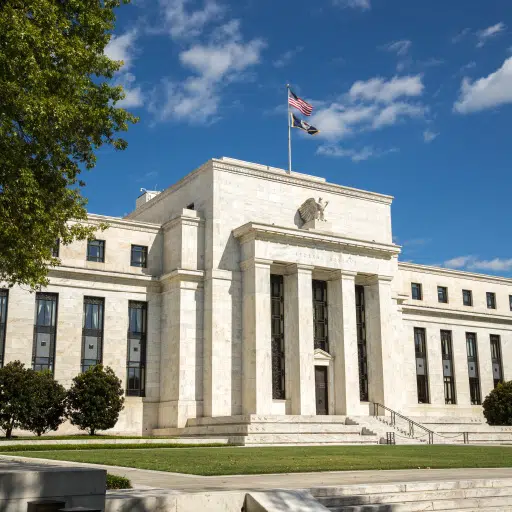
Rising inflation has been a key topic of discussion for those evaluating the U.S. economy’s recovery from the Covid-19 pandemic. Recently, Fed Chair Jerome Powell testified before the Senate Committee on Banking, Housing, and Urban Affairs and provided an update on the state of the U.S. economy. He also discussed his frustrations around inflation and the impacts of rising prices on the economy.
In addition to the Fed Chairman’s discussion, members of the FOMC submitted their updated projections for future market conditions at September’s meeting. Among these projections were forecasts for when the Fed should raise interest rates, as well as a tentative timeline for tapering current asset purchases.
Powell’s Senate Update on the Current State of the Economy
During the Fed Chair’s Senate interview on September 28th, he reported that GDP growth in the first half of the year was robust. For the remainder of 2021, he expects GDP to continue to be positive but to grow more slowly than in the first half of the year. He attributed the projected slowdown to the rise in COVID-19 cases which could hold the recovery back in pandemic-sensitive sectors.
Additionally, Powell noted that household spending increased rapidly in the first half of the year. He attributed this to a rebound in some sectors that were constrained last year by COVID-19. However, spending leveled out over the summer as consumers’ spending patterns began to normalize.
On the labor market, Powell noted that job gains have averaged 750k per month over the last three months but slowed in August, particularly in COVID-19-sensitive sectors. The unemployment rate, reported as 5.2% in August, may understate the actual employment shortfall, as many workers continue to struggle with pandemic-related worries like caregiving and fear of contracting the virus. Powell also noted that joblessness continues to disproportionality effect lower-wage workers and minorities – particularly those in the service sector.
When inflation first became apparent, the Fed concluded that it was due to temporary factors related to the pandemic and would moderate when those factors eased. In his latest testimony, Powell noted that supply bottlenecks and hiring difficulties are continuing to constrain output and put upward pressure on prices. This could lead to a longer lasting and more severe inflation than originally anticipated.
FOMC Members Update Economic and Interest Rate Projections
At the September meeting, members of the Federal Open Market Committee [FOMC] submitted their updated projections for future market conditions. Members submit their projections four times a year and since June, FOMC members’ short-term outlook for the economy has become slightly more negative. The median projection for GDP in 2021 is now 5.9%. This is down from June’s estimate of 7.0%.
Inflation is forecasted to reach 4.2% by the end of the year, a significant increase from June’s projection of 3.4%. The projected unemployment rate for 2021 is now 4.8%, up from 4.5% in June. Despite these short-term setbacks, the members’ longer-term projections remain relatively stable.
While some economists expected FOMC members to announce a plan for tapering asset purchases at the September meeting, this did not occur. FOMC members voted to continue purchasing $80 billion of Treasury securities and $40 billion of mortgage-backed securities per month until further progress has been made toward full employment. While a tapering schedule was not announced, FOMC members did note that progress toward employment goals has been made. During the press conference, Fed Chair Jerome Powell said, “so long as the recovery remains on track, a gradual tapering process that concludes around the middle of next year is likely to be appropriate.”
The Fed has kept interest rates near zero throughout the pandemic and subsequent recovery. With inflation continuing above normal rate, the FOMC members moved up the timeline for interest rate increases. Of the eighteen members, nine forecasted interest rate increases in 2022. For comparison, only seven foresaw rate increases that soon at the June meeting. The new median projections for the federal funds rate are 0.1% through the end of 2021, 0.3% in 2022, and 1.0% in 2023. This is a marked escalation from the previous estimates which kept the federal funds rate near zero through the end of 2022.
Markets React to Fed Chair Testimony
Prior to Powell’s testimony, the 10-year Treasury yield jumped 6.2 basis points to 1.541%. This represented the highest yield since June. The dollar also saw a boost following hearing, and by mid-morning, the U.S. dollar index jumped 0.4%, to its highest level since November.
Equity markets also reacted swiftly to Powell’s comments. Growth stocks dipped, and the tech-heavy Nasdaq Composite Index fell by more than 2% by mid-day. Following the FOMC’s updated projections, stocks for financial companies saw a boost. The iShares U.S. Financials ETF gained more than 1.4% the day after the meeting. Values for cyclical stocks also increased following the FOMC meeting and the Invesco DWA Consumer Cyclicals Momentum ETF gained more than 2%.
Don’t miss our interest rate and Federal Reserve updates.
Stay up to date on current economic trends and developments by following ADM on Twitter, Facebook, and LinkedIn. We help businesses react swiftly to changing market conditions by providing valuable insights, including analysis of FOMC Meetings.
If your business needs safety and competitive returns for cash reserves, ADM can help. Our American Money Market Account™ – AMMA™ for short – delivers access to the ultimate protection for business cash and nationally competitive returns.
Contact us today to learn more.
*American Deposit Management Co. is not an FDIC/NCUA-insured institution. FDIC/NCUA deposit coverage only protects against the failure of an FDIC/NCUA-insured depository institution.
